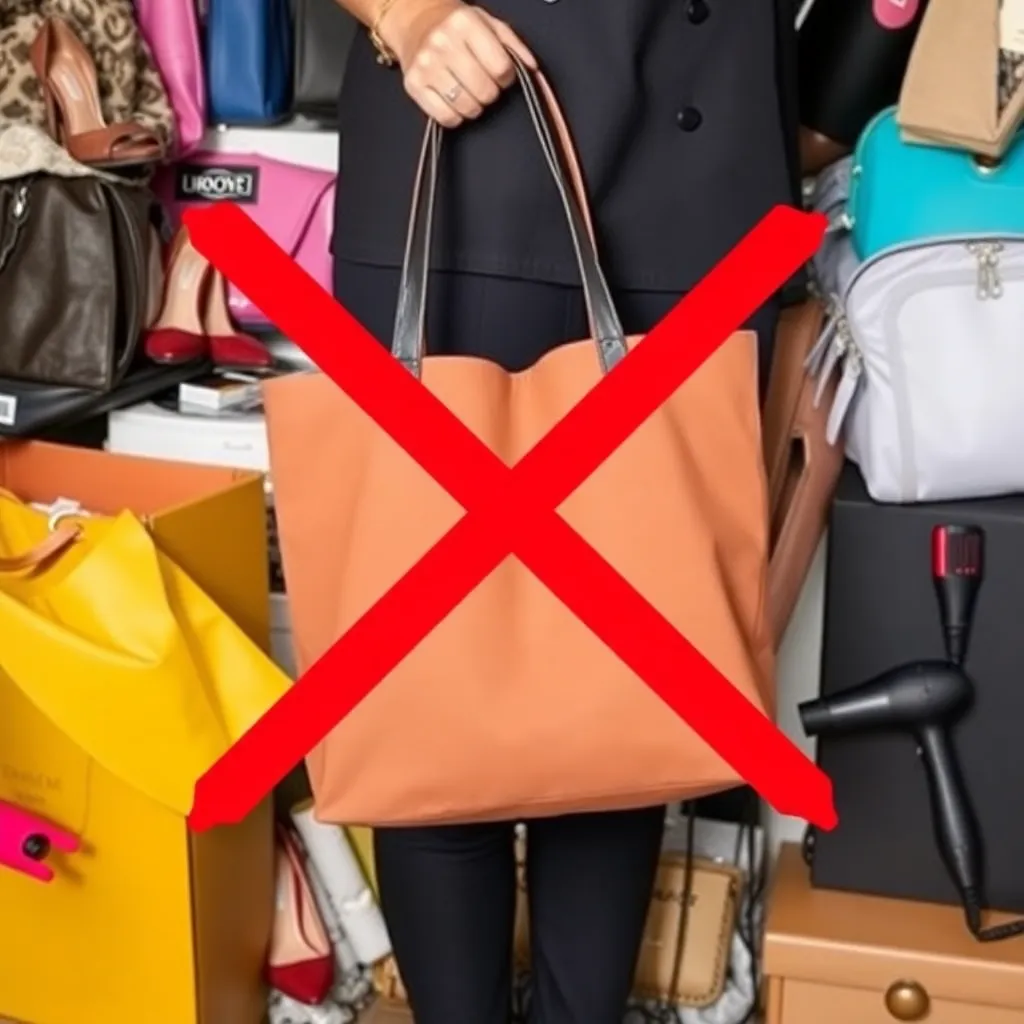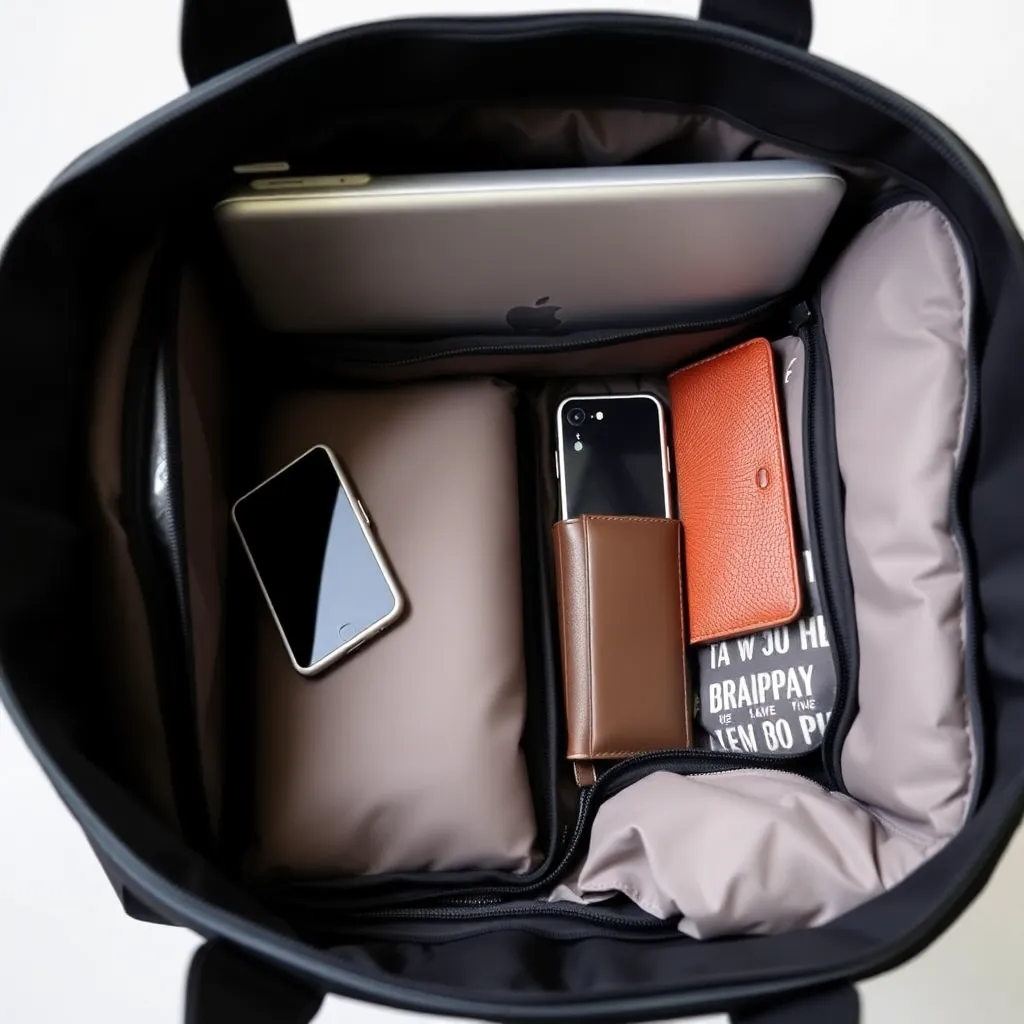Tote Bags
The Art of Packing: How to Fit Everything into Your Tote Bag
The struggle to pack everything into a tote bag is a universal problem that many of us face on a daily basis. According to a survey by the National Retail Federation, the average American uses 2.6 bags per day, with tote bags being a popular choice due to their convenience and eco-friendliness. However, this convenience can quickly turn into frustration when we’re left scrambling to fit all our essentials into one bag.
From bulky laptops to oversized water bottles, the items we need to carry can add up quickly, making it seem impossible to fit everything into our trusty tote. And let’s not forget about the smaller items like wallets, makeup bags, and snacks that can get lost in the depths of our bag. It’s no wonder that many of us are left feeling overwhelmed and disorganized.
But the good news is that with a few simple strategies, you can master the art of packing and make the most of your tote bag. By implementing a few key techniques, such as rolling your clothes, using packing cubes, and designating a specific spot for each item, you can fit more into your bag than you ever thought possible. And the best part? You’ll be able to find what you need in a flash, saving you time and reducing stress.
Step 1: Purge and Prioritize
When it comes to packing for a trip, it’s easy to get caught up in the excitement and throw everything into your suitcase “just in case.” However, this approach can lead to a heavy, cluttered bag and a whole lot of unnecessary stress. By taking a step back and assessing what you really need, you can avoid this common pitfall and pack like a pro.
The key is to be ruthless when it comes to deciding what makes the cut. Ask yourself if you really need that extra pair of shoes or if you can get by with a smaller makeup bag. Remember, the goal is to pack light while still bringing everything you need to stay comfortable and happy on your trip. According to the Travel + Leisure website, one of the biggest packing mistakes people make is bringing too much stuff, so try to keep this in mind as you’re making your decisions.
As you’re sorting through your belongings, set aside the must-haves and leave the non-essentials behind. This will not only make your packing process easier, but it will also save you space and weight in your luggage. And who knows, you might be surprised at how little you really need to bring along. By being intentional about what you pack, you can ensure a stress-free and enjoyable trip.

Step 2: Organize and Categorize
Organizing your belongings into categories is a crucial step in maximizing the efficiency of your tote. By designating specific areas for specific items, you can ensure that everything has its own designated spot, making it easier to find what you need when you need it. This approach also helps to prevent clutter from building up again in the future.
A good place to start is by identifying the items you use most frequently, such as your laptop, phone, and wallet. Assign a dedicated space for each of these items, like a laptop sleeve or a phone pocket, to keep them protected and within easy reach. You can also consider allocating a section for snacks and drinks, making it convenient to grab a quick bite or sip on the go.
According to the principles of minimalism, categorizing and containing your belongings can help reduce stress and increase productivity. By keeping similar items together, you can quickly locate what you need and avoid wasting time searching for misplaced items. Additionally, having a organized tote can also help you develop healthy habits, such as regularly cleaning out your bag and getting rid of items you no longer need.
Step 3: Utilize Every Available Space
When it comes to making the most of your tote’s space, organization is key. Using packing cubes, pouches, and bags can help keep items contained and easy to find, ensuring that you can quickly locate what you need without having to dig through a cluttered bag. This is especially important for commuters or travelers who need to access their belongings on-the-go.
In addition to using separate storage solutions, consider investing in a tote with built-in compartments or pockets. This can help maximize storage and keep items separated and organized. For example, a tote with a dedicated laptop sleeve or phone pocket can help protect your devices and keep them within easy reach.
According to the experts at Real Simple, using a bag with built-in compartments can also help reduce clutter and make it easier to find what you need. By keeping similar items together, you can streamline your morning routine and reduce stress.
By combining the use of packing cubes and a tote with built-in compartments, you can create a highly functional and organized bag that meets your specific needs. Whether you’re heading to the office or a weekend getaway, a well-organized tote can make all the difference in your daily routine.

Step 4: Pack Strategically
The key to packing a tote bag efficiently is to prioritize the placement of items based on their weight and size. By placing heavier items like laptops and books at the bottom of the bag, you create a stable foundation that prevents the bag from becoming top-heavy and prone to tipping over.
This approach also helps to distribute the weight of the bag more evenly, making it easier to carry for extended periods of time. Additionally, by reserving the bottom of the bag for heavier items, you can free up space at the top for smaller, lighter items like pens and keys, which are easier to access and less likely to get damaged.
According to the American Chiropractic Association, proper weight distribution is crucial for maintaining good posture and preventing back and shoulder strain (https://www.acatoday.org/Patients/Health-Wellness-Information/Ergonomics-and-Back-Pain). By packing your tote bag thoughtfully, you can reduce the risk of discomfort and injury, and make your daily commute or travel experience more enjoyable.
Conclusion: The Art of Packing Perfected
By following these simple steps, you’ll be able to develop a packing strategy that works best for you and your unique travel needs. This will help you to avoid common mistakes, such as overpacking or forgetting essential items, and ensure that you have a stress-free travel experience.
Flexibility is key when it comes to packing, as unexpected situations can arise at any time. Being willing to adjust your strategy as needed will help you to stay calm and adapt to any changes that may occur during your trip. This could include packing clothes that can be easily mixed and matched or bringing a portable laundry detergent in case you need to wash clothes unexpectedly.
Getting creative with your packing solutions can also make a big difference. For example, using packing cubes or rolling your clothes can help to maximize space in your luggage and reduce wrinkles. You can also use items like scarves or belts to add an extra layer of protection to fragile items or to keep them from shifting during transit.
With a little practice and patience, you’ll be a packing pro in no time. Remember to stay organized, plan ahead, and don’t be afraid to try new things. Happy packing, and safe travels! For more packing tips and tricks, check out the Lonely Planet website, which offers a wealth of information on how to pack like a pro.
